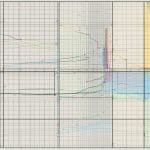Types Of Functions Graphed
Functions are an essential concept in mathematics, and graphing functions allows us to visualize their behavior. Graphing functions can help us understand the relationship between input and output values, identify key features of functions, and make predictions about how they will behave. There are many types of functions, each with their own unique characteristics and graphs.
Fundamentals of Graphing Functions
Before diving into the different types of functions, it is important to understand the fundamentals of graphing functions. A graph is a visual representation of a function that shows the relationship between input and output values. The x-axis represents the input values, and the y-axis represents the output values. By plotting points on the coordinate plane, we can create a graph of a function.
Linear and Quadratic Functions
Linear functions are functions that have a constant rate of change and graph as a straight line. Quadratic functions are functions that have a degree of two and graph as a parabola. These are two of the most common types of functions and are often used in real-world applications. Understanding how to graph these functions is essential for many fields, including engineering, physics, and economics.
Key Takeaways
- Graphing functions allows us to visualize their behavior and understand the relationship between input and output values.
- Linear and quadratic functions are two of the most common types of functions and are often used in real-world applications.
- Understanding how to graph functions is essential for many fields, including engineering, physics, and economics.
Fundamentals of Graphing Functions

Understanding the Coordinate Plane
Before delving into the basics of graphing functions, it is essential to understand the coordinate plane. The coordinate plane is a two-dimensional plane that consists of two perpendicular lines, namely the x-axis and the y-axis. The point where these two axes intersect is known as the origin, and its coordinates are (0,0). The x-axis represents the horizontal axis, while the y-axis represents the vertical axis. Any point on the coordinate plane can be represented by an ordered pair of real numbers (x,y), where x is the horizontal coordinate and y is the vertical coordinate.
The Concept of Domain and Range
When graphing functions, it is crucial to understand the concept of domain and range. The domain of a function is the set of all possible x-values that the function can take, while the range is the set of all possible y-values that the function can take. In other words, the domain is the set of all values for which the function is defined, while the range is the set of all values that the function can produce.
When graphing a function, the domain and range can help you determine the shape and behavior of the graph. For example, if the domain is all real numbers, then the graph will extend indefinitely in both directions. On the other hand, if the domain is limited to a specific range of values, then the graph will only exist within that range. Similarly, the range can help you determine the minimum and maximum values that the function can produce.
In summary, understanding the coordinate plane and the concept of domain and range is crucial when graphing functions. By knowing the domain and range of a function, you can determine the behavior and shape of the graph.
Linear and Quadratic Functions
Graphing Linear Functions
Linear functions are a type of function that can be graphed as a straight line. These functions have the form of y = mx + b, where m is the slope of the line and b is the y-intercept. The slope of a line is the rate of change of the function, which can be calculated as the change in y divided by the change in x.
To graph a linear function, one can plot the y-intercept and then use the slope to find additional points on the line. Alternatively, one can use two points on the line to find the slope and then use the slope and one point to find the y-intercept.
Characteristics of Quadratic Functions
Quadratic functions are a type of function that can be graphed as a parabola. These functions have the form of y = ax^2 + bx + c, where a, b, and c are constants. The coefficient a determines the shape of the parabola. If a is positive, the parabola opens upwards, and if a is negative, the parabola opens downwards.
The vertex of a parabola is the point where the function reaches its maximum or minimum value. The x-coordinate of the vertex can be found using the formula x = -b / 2a, and the y-coordinate can be found by plugging in the x-coordinate into the function.
To graph a quadratic function, one can find the vertex and a few additional points on the parabola. Alternatively, one can use the axis of symmetry, which is the vertical line that passes through the vertex, to find additional points on the parabola.
In summary, linear functions can be graphed as straight lines, and quadratic functions can be graphed as parabolas. The slope of a linear function is the rate of change, and the vertex of a quadratic function is the maximum or minimum point.
Special Function Types
Exploring Absolute Value Functions
An absolute value function is a special type of function that contains an absolute value expression. The absolute value is the distance of a number from zero, regardless of its sign. The function is defined as f(x) = |x|, where x is the input value and f(x) is the output value. The graph of an absolute value function is a V-shaped graph that opens upwards or downwards depending on the sign of the coefficient of x.
The absolute value function has many real-world applications, such as in physics and engineering. It is used to model situations where a quantity can be either positive or negative, such as temperature or distance.
Roots and Radical Functions
A root function is a function that contains a radical expression. A radical is a symbol that represents a root, such as the square root or cube root. A square root function is a special type of root function that contains a square root expression. The function is defined as f(x) = ‚àöx, where x is the input value and f(x) is the output value. The graph of a square root function is a half-parabola that opens upwards.
A radical function is a function that contains a radical expression of any degree. The function is defined as f(x) = ‚àõx, where x is the input value and f(x) is the output value. The graph of a radical function depends on the degree of the radical expression. For example, the graph of a cube root function is a curve that passes through the origin and has a steep slope at the beginning.
Root and radical functions are used in many real-world applications, such as in finance and economics. They are used to model situations where a quantity can be negative, such as debt or loss.
In conclusion, special function types such as absolute value functions and root functions are essential in mathematics and have many real-world applications. By understanding their properties and graphs, we can better understand and model various phenomena.
Advanced Function Graphs
Exponential and Logarithmic Functions
Exponential functions are functions of the form f(x) = a^x, where a is a positive constant and x is any real number. The graph of an exponential function is a curve that grows or decays rapidly. The domain of an exponential function is all real numbers, and the range is all positive numbers.
Logarithmic functions are the inverse of exponential functions. They are functions of the form f(x) = log_a(x), where a is a positive constant and x is any positive number. The graph of a logarithmic function is a curve that grows very slowly or decays very rapidly. The domain of a logarithmic function is all positive numbers, and the range is all real numbers.
Both exponential and logarithmic functions have asymptotes. An asymptote is a line that the graph of a function approaches but never touches. The asymptote of an exponential function is the x-axis, and the asymptote of a logarithmic function is the y-axis.
Investigating Polynomial Functions
Polynomial functions are functions of the form f(x) = a_n x^n + a_{n-1} x^{n-1} + … + a_1 x + a_0, where a_n, a_{n-1}, …, a_1, a_0 are constants and n is a non-negative integer. The graph of a polynomial function is a curve that can have many different shapes, depending on the degree of the polynomial and the values of the coefficients.
Polynomial functions can have multiple roots, which are the values of x that make the function equal to zero. The number of roots of a polynomial function is equal to its degree. For example, a quadratic function has two roots, a cubic function has three roots, and so on.
Polynomial functions can also have multiple extrema, which are the points where the function reaches a maximum or minimum value. The number of extrema of a polynomial function is equal to its degree minus one. For example, a quadratic function has one extremum, a cubic function has two extrema, and so on.
In conclusion, advanced function graphs can take many different shapes and have various properties. Exponential and logarithmic functions have asymptotes, while polynomial functions can have multiple roots and extrema. Understanding these properties can help in analyzing and interpreting the graphs of advanced functions.
Analyzing Function Behavior
Utilizing the Vertical Line Test
One way to determine if a relation is a function is to use the Vertical Line Test. This test involves drawing a vertical line on a graph and seeing if it intersects the graph in more than one point. If it does, then the relation is not a function. On the other hand, if the vertical line intersects the graph in only one point, then the relation is a function.
When analyzing the behavior of a function, it is important to identify where the function is increasing, decreasing, or constant. This can be done by looking at the slope of the function. If the slope is positive, then the function is increasing. If the slope is negative, then the function is decreasing. If the slope is zero, then the function is constant.
Transformations of Graphs
Functions can be transformed by moving them up or down, stretching them vertically or horizontally, or reflecting them across an axis. When a function is moved up or down, the entire graph is shifted vertically. When a function is stretched vertically, the graph becomes taller or shorter. When a function is stretched horizontally, the graph becomes wider or narrower. When a function is reflected across an axis, the graph is flipped over that axis.
These transformations can be represented mathematically by adding or subtracting constants to the function, multiplying or dividing the function by constants, or replacing x with -x or y with -y. It is important to note that these transformations affect the behavior of the function. For example, stretching a function vertically can change the location of its maximum or minimum points, while reflecting a function across an axis can change the direction of its increasing or decreasing behavior.
When analyzing the behavior of a transformed function, it is important to consider how the transformations affect the original function. For example, if a function is stretched vertically by a factor of 2, then its maximum and minimum points will be twice as high as they were before. Similarly, if a function is reflected across the x-axis, then its increasing and decreasing behavior will be reversed. By understanding how transformations affect the behavior of functions, it is possible to analyze the behavior of even complex functions.






